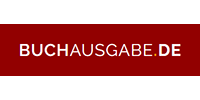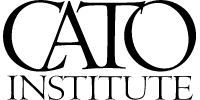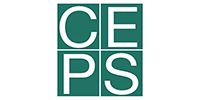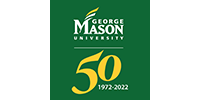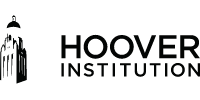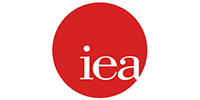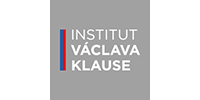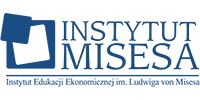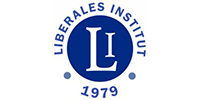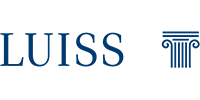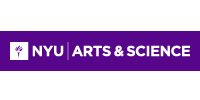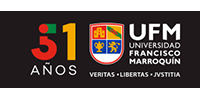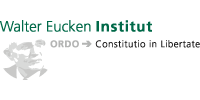On the pros and cons
of the Swedish voucher system
Abstract
In 1992, Sweden went from a highly centralized school system where almost everybody was enrolled in government-operated schools and private alternatives were almost non-existent to one where parents/students could choose between different public schools and – through a voucher system – also among approved private schools. The “independent schools” as the privately operated but publicly funded schools are referred to, could compete on almost equal terms with the public: They could also operate as for-profit entities, but they could (after 1998) not charge tuition in addition to the government voucher.
The idea behind the reform was that choice and competition would benefit both the students who now could choose and society as a whole, as competition might improve the outcomes for all students.
Initially, there were few private alternatives, but today, 16 percent of primary and 31 percent of secondary school students are enrolled in independent schools. Although the system is hotly debated and criticized by the political left, school choice has widespread support among the public.
This paper describes the Swedish school voucher reform and its origins. It also discusses the effects of competition on educational outcomes, grading, and costs and what others can learn from the Swedish reform.
Background
In 1992, Sweden went from having a highly centralized school system with few private elements, and where students were allocated to the school closest to home, to one where all students could choose between public, i.e., municipal, and private schools (“independent schools”) via a voucher system.
Establishing an independent school and accepting voucher students required permission from the state. In principle, all schools would offer the same curriculum, but certain deviations were allowed. Specific orientations, such as other pedagogies (for example, Montessori) or towards specific languages or ethnic or religious groups , were also possible. The reform’s purpose was partly to offer students and families freedom of choice and partly to encourage competition between schools, leading to quality improvements. The previously existing private schools (a handful in the country) were re-incorporated into independent schools. They could then no longer charge tuition in addition to the voucher. Independent schools could also not refuse students as long as there were available places.
At the same time, the responsibility for the public schools was transferred to the municipalities, from having previously been shared between the state and the municipality. Concurrently, a state authority was established to supervise the schools. The purpose of this was primarily to obtain a more precise division of responsibilities between regulators and financiers/executors and to gain control over costs (Lakomaa & Wahlund, 2019). During the 1980s, educational costs in Sweden increased at a rate that politicians considered unsustainable; the funding system was also designed in a way that invited strategic behavior and made cost control difficult (Lakomaa, 2008). The voucher amount was determined at the municipal level, financed via the municipal income tax. Through this, the municipalities were also able to make adjustments to the local cost situation, which likely contributed to reducing the rate of cost development.
In the first years, few independent schools were established. In the school year 1992/93, only 1 percent of primary school students and 1.7 percent of upper secondary school students attended an independent school. After ten years, in 2001/02, the proportion had increased to 4.8 percent in primary school and 6.1 percent in upper secondary school. Today (2022/23), the corresponding proportion is 16.2 percent in primary school and 31.2 percent in upper secondary school. This means that after three decades, most students still attend municipal schools. In every third municipality, there is still no independent school (the number in metropolitan areas, on the other hand, is relatively high).
Pros and cons of the Swedish voucher system
During the three decades that independent schools have existed, there has been an extensive debate about the system's pros and cons. The issue of school choice and independent schools has primarily become a right-left issue, with parties on the right being largely positive and those on the left being negative. However, no attempts to abolish the system have been made even though there was a left-wing majority in the Swedish Parliament for about half of this period.
In the following section, we provide an overview of the pros and cons raised in the debate and discuss the extent to which they are consistent with empirical evidence.
Perceived benefits
The system allowed choice for all students, not only the rich.
This is the basis of the system and is correct. Before school vouchers was introduced, there was a lack of choice for all students (there were a handful of private schools – one Jewish, one Estonian, and a few boarding schools). The objection has been that it was more common for students with a higher socio-economic status to choose an independent school, but everyone has the option even if it is not used.
Students in independent schools perform better.
Research shows that independent school students perform better than others (Bölmark & Lindahl, 2015; Wössman, 2007)). This is not unexpected given that everyone who attends an independent school makes an active choice – which indicates that they (or their parents) care (more) about education. Whether this is about a selection effect or whether students who attend an independent school learn more needs to be examined. Controlled for student background, however, the effect holds up (Heller-Sahlgren, 2024). To this, it can be added that the choice per se is important for many students and families. A student who has been bullied at school may, for example, want to opt out of that school (without the aim being to switch to an academically better school).
Competition and choice improved educational outcomes (also) for municipal schools
Regarding the motivations for the reform, the previous research generally shows that the effects of school competition on educational outcomes have largely been positive, but small (Bölmark & Lindahl, 2015; Lundgren & Lakomaa, 2017). Even small changes can significantly impact human capital formation and economic growth at the macro level.
Competition and choice will reduce violence in schools.
An investigation into school violence and disorder show that competition decreases this, especially in upper secondary schools (Sebathu, 2017; Sebathu & Al, 2021). In surveys concerning which factors govern the choice of school, the absence of violence also ranks high before, for example, academic performance (Almega, 2018), making this a competitive advantage.
Competition and choice will increase efficiency and lower costs.
Education costs increased after the voucher reform but at a lower rate than before. Competition has probably played an important role here through general cost pressure and the spread of innovations.
Although most independent schools are small, most independent school students attend schools that belong to large corporate groups. One way to reduce costs without affecting quality is to run schools in group form and move non-school unit-specific costs, such as IT, and parts of administration, such as HR and procurement, to the group level. In these areas, a school with 70 students will have roughly the same costs as one with 700. A group (municipal or private) with 7,000 students will not have significantly higher costs for such things either.
Larger schools (and groups) also have greater opportunities to adjust to economic fluctuations, for example, due to students or teachers leaving. Each such cost will then be relatively smaller. In a group, swings in different directions (for example, at different schools) can counteract each other, which means less financial risk. This means, all other things being equal, they need less working capital, which increases the returns. A small school, on the other hand, will need a larger financial buffer.
Larger schools will also find it easier to recruit capable teachers – which is significant for educational results. The school that can offer a full-time position in, e.g., Spanish, will most likely receive more qualified applicants than the one that can only offer one at 20 percent. Since there are often several teachers in the same subject at a larger school, there are also increased opportunities for, for example, co-assessment and covering for a colleague who is temporarily absent.
What the economic outcome looks like in reality is an empirical question. This has been investigated, among others, by Bölmark and Lindahl (2015) (who, however, only compare 1992 and 2009 but found that the presence of independent schools reduced costs for the municipalities) and by Gabriel Heller-Sahlgren (2020). The latter examined the period 1993–2018 and found that a ten percent increase in the proportion of students in independent schools in a municipality could be associated to a reduction in costs per student by just over 1 percent.
Choice allowed for different specializations.
When the system was introduced, the independent school system was expected to increase the supply of schools with alternative pedagogy. Such schools were relatively common in the early years, but since then, almost all independent schools have had a standard curriculum, so this assumption has not caught on. However, the fact that the schools have a standard curriculum has impacted competition because such schools exert more substantial competitive pressure on surrounding schools than niche schools. Profit will incentivize good schools to expand (locally and nationally)
This has happened; the schools that have expanded have mainly belonged to profit-making groups. Research (Lundgren & Lakomaa, 2017) also indicates that the competitive pressure from such schools is greater, i.e., establishing a for-profit school that is part of a corporate group puts greater pressure on surrounding schools to improve (which they also do).
Perceived problems
Profit motive reduces quality (profits could go to the students)
A common criticism of the voucher system is that for-profit schools mean that money channeled to the owners (those that constitute profit) could have been spent on education. Since a school receives a fixed amount per student through the voucher, profit can only occur if the cost is lower than that. From this point of view, the fact that a school is making a profit means it has substandard quality.
However, quality can (and should) be measured in absolute terms, and profit as a residual. Higher costs do not necessarily mean lower quality: since some of the school’s costs are fixed, or fixed in intervals (for example, per class), the school that loses students as a result of competition – for example, as a result of its low quality – will have higher costs in relation to revenues. No or falling profit can, therefore, be an indication of low quality. The legal standard regarding quality for Swedish schools may be too low, but in that case, it is not an issue that should be linked to the schools’ profitability.
It is also stated that independent schools (especially for-profit schools) are incentivized to pay teachers lower salaries or give students grades above what they deserve—which would be unfair. Regarding teacher salaries, competition means that teachers have more employers to choose from; it also limits the employer’s ability to keep wages down.
Since the voucher reform, Sweden has also introduced occupational licensing for teachers. This has also probably contributed to a generally higher wages for teachers; occupational licensing also typically means that the price for a given level of quality will be higher for consumers (Kleiner & Soltas, 2023). In the school market, where a higher price cannot be charged, occupational licensing means that the quality of a given price can be expected to be lower. However, there are some opportunities to hire teachers who are not licensed (if there are no licensed ones available). For these, the labor market works as usual (and they do not receive the licensee’s wage premium). Suppose there are no significant differences in productivity between licensed and non-licensed teachers. In that case, this will mean that the productivity (quality) for a given salary position is higher for the latter. Independent schools in Sweden have, on average, fewer licensed teachers employed.
No evaluation of Swedish teacher quality or teacher effects on education (corresponding to those done, for example, by Hanushek, 2010; 2011) exists. The difference in pay between different schools in Sweden is significant, but due to a lack of evidence, it is not possible to comment on how pay and quality correspond. At the same time, the salary is not the only factor determining whether someone takes a job. An employer offering a better working environment can attract teachers without paying higher salaries. However, more research is needed in this area.
Regarding grading, research shows that students in independent schools get higher grades than municipal school students, and part of this may be grade inflation (Wikström & Wikström, 2005; Tyrefors & Vlachos, 2017). However, the results we get are, to a large extent, dependent on the method. Research that compares the relation between grades and national standardized tests and compare the results for girls and boys – where it should not be any grade inflation (a school would hardly deliberately give too high grades only for one gender) gives that competition does not drive this difference (Lundgren & Lakomaa, 2017 ). If we compare results in relation to externally corrected international tests such as PISA (where grade inflation can be ruled out as an explanation), we also find that students at independent schools have significantly greater knowledge of mathematics: the difference, when corrected for student background, corresponds to approximately one year of learning (Heller- ahlgren, 2024).
Competition reduces quality/increases costs for municipal schools.
Suppose students opt out of municipal schools to attend independent schools. In that case, there is a risk that the municipal schools will incur higher costs because the fixed costs are distributed among fewer students. This can, therefore, lead to lower quality. If the students who change from municipal to independent schools are high achievers and those who stay are those who need most support this, in turn, can lead to the costs per student increasing.
For this to happen, students and families need to perceive independent schools as more attractive; otherwise, they will not switch. That students change is a signal that all is not well. This is also the core of the competition system.
If the schools losing students do not adapt, this will lead to higher costs (and likely additional students leaving the school). Here, the problem is not the competition but that the schools do not adapt or close down.
School choice leads to segregation.
School choice can lead to students with similar backgrounds clustering together (and to the same schools). This can lead to segregation (Holmlund & al, 2014). However, if the alternative to school choice is for the students to be allocated to the schools closest to their homes (as in Sweden before the reform), all residential segregation will take effect in the school. Instead of choosing a school, families must change school district/residential areas. This is likely a higher barrier for most people than changing schools. School choice means (if there is residential segregation) instead an opportunity for the less well-off to change schools and thus something that (all other things being equal) reduces segregation.
Lessons
The Swedish school voucher system has existed for 32 years. Even though the percentage of students who chose independent schools, especially in upper secondary school, is high, 31.23% (2022/23). In primary school, the percentage is 16.2 percent. Despite this, independent schools have not been established in all the country’s municipalities; competition is, therefore, still relatively limited.
However, the market has become increasingly consolidated. In total, there are 831 independent primary schools and 466 independent upper secondary schools in Sweden. The majority of independent school students, however, attend schools that belong to a corporate group that has several schools. Many schools are also still small. The average size of a school in Sweden is roughly 200 students (this applies to both independent and municipal schools; however, municipal schools are slightly larger). Few independent schools have more than 700 students.
The fact that the schools are small is probably why they are not particularly profitable either. Schools are characterized by so-called stair-step costs and have relatively high fixed costs, but the income depends on the number of students. Many schools are also run by people with no previous experience of running a business (e.g., former teachers). The corporate group schools are an exception here; they have professional management. From this perspective, the independent school market is not fully developed. However, the experience of other markets for professional services shows that such professionalization processes can take a long time, many decades. These factors can probably explain why the effects of competition are relatively small.
Many schools are still not exposed to competition, and even in cases where a independent school has been established in the municipality, the competitive pressure is not necessarily very strong. There are two main explanations for this. On the one hand, most families choose the nearest school regardless of the range, regardless of what they think in surveys is the most important thing when choosing a school. On the one hand, many independent schools are focused on relatively small market niches; it may be about schools with special pedagogy, schools that cater to a particular ethnic or religious minority, or schools that are located in a small place in the countryside (for example, schools that parents have taken over after the municipal school in the village closed).
The exception regarding competition is the schools that belong to a corporate group. These can be expected to expand and exert greater competitive pressure on surrounding schools. The lesson learned from the Swedish school voucher system is that we should not expect large immediate effects, and it may take a long time before the market becomes professionalized and consolidated.
A second lesson is that the school voucher system must be combined with systems for measuring skills and value-added. A large part of the political criticism against the independent school system is based on notions that there is a contradiction between generating quality and making money and that independent schools (especially for-profit schools) choose profit over quality. This criticism is also only sometimes affected by the fact that data shows that students in independent schools do better in terms of knowledge than students in municipal ones. The better results could be explained by the fact that the independent schools only admit students with the best conditions.
The fact that it is difficult to measure knowledge objectively also contributes to this problem. Regardless of how it is in reality, this opens the door to question the independent school system. In the Swedish case, the issue has also been complicated because the grading system (both grading principles and grading scales) has been changed several times when there has been school vouchers. In addition, during the same period, there have not been standardized externally corrected tests covering all students or subjects. In order to increase both the ability to follow up effects and to ensure legitimacy, some form of independent knowledge measurement is needed.
The third lesson is that systems should be designed so schools do not become too small.
Although there is a demand for smaller schools, not least for younger children and not least because small schools enable them to be closer to the homes, it is more challenging to run a school efficiently and with quality if it is too small. Swedish schools are relatively small, and, above all, during the first two decades of the independent school system, most independent schools were very small.
The average school in Sweden has around 200 students; for a school with grades 1-10 (F-9 in the Swedish nomenclature), it means one class per year with 20 students each. International research shows that the optimal school size is between 1500 and 2000 students (Lee & Smith, 1997). It is not unusual for schools in Sweden to have 100 students or fewer. In 2022/23, 9.3 percent of independent school students and 5.8 percent of municipal school students attended a school with fewer than 100 students. In the same year, only 7.9 percent of independent school students attended a school with more than 800 students, and only 3.6 percent of municipal school students attended such a school. The number of schools with more than 800 pupils is also very low; in Sweden this year, there were only 48 schools with more than that number of pupils.
The fact that municipalities did not close underperforming schools that have lost many students to independent schools but instead continued them with fewer students has contributed to less competitive effects and indirectly higher costs.
Although this is not directly related to the voucher system, it is worth considering having a minimum permitted size for schools (whether run as an independent school or by a municipality) that corresponds to the minimum size necessary to operate a school with good quality and in a cost-effective way.
Erik.Lakomaa
Institute for Economic and Business History Research (EHFF), Stockholm School of Economics
References
Almega. 2018. Obligatoriskt skolval. Stockholm: Almega.
Böhlmark, A., & Lindahl, M. (2015). Independent schools and long‐run educational outcomes: Evidence from Sweden’s large‐scale voucher reform. Economica, 82(327), 508-551.
Hanushek, E. A. (2010). The Economic Value of Higher Teacher Quality, National Center for Analysis of Longitudinal Data in Education Research. Working Paper 56.
Hanushek, E. A. (2011). The Economic Value of Higher Teacher Quality. Economics of Education Review, 30(3), 466–479
Heller-Sahlgrem,G (2020) ”Friskolorna och skolkostnaderna ‒ En empirisk granskning av Åstrandutredningens analyser och slutsatser ” IFN Policy Paper nr 91
Heller-Sahlgren, G. (2024) Vad kan vi lära av PISA 2022? Faktorer bakom svenska elevers resultat. Näringslivets skolforum, Svenskt näringsliv.
Hensvik, L. (2012). Competition, wages, and teacher sorting: Lessons learned from a voucher reform. The Economic Journal, 122(561): 799-824
Hinnerich, B. T., & Vlachos, J. (2017). The impact of upper-secondary voucher school attendance on student achievement. Swedish evidence using external and internal evaluations. Labour Economics, 47, 1-14.
Holmlund, H., Häggblom, J., Lindahl, E., Martinson, S., Sjögren, A., Vikman, U., & Öckert, B. 2014. Decentralisering, skolval och fristående skolor: resultat och likvärdighet i svensk skola IFAU Rep 2014:25.
Kleiner, M. M., & Soltas, E. J. (2023). A welfare analysis of occupational licensing in US states. Review of Economic Studies, 90(5), 2481-2516.
Lakomaa, E (2008). The Economic Psychology of the Welfare State, diss. Stockholm: EFI
Lakomaa, E & Wahlund, R. (2019). "Microproceses of Deregulation: the Swedish experience of decentralization of education," Essays in Economic and Business History, Vol 37 pp 1-30.
Lee, V. E., & Smith, J. B. (1997). High school size: Which works best and for whom? Educational Evaluation and Policy Analysis, 19(3): 205-227.
Lundgren, G & Lakomaa, E (2017) ”The Effect of Competition on Grades” in Lundgren, G. (2017). Essays on job market screening, in-group bias, and school competition (diss). Stockholm School of Economics.
Sebhatu, A. (2017). Deregulation, institutional change, and entrepreneurship in the Swedish education system: intended and unintended effects of competition (Doctoral dissertation, Stockholm School of Economics).
Sebhatu, A, Wennberg, K, Lakomaa, E, & Brandén, M (2021) “More Schools, Less Trouble? Competition and Schools’ Work Environment, Sweden 1999–2011” SSE Working Papers in Business Administration 2021:1
Wikström, C., & Wikström, M. (2005). Grade inflation and school competition: an empirical analysis based on the Swedish upper secondary schools. Economics of Education Review, 24(3), 309-322.
Wößmann, L. (2007). International Evidence on School Competition, Autonomy, and Accountability: A Review. Peabody Journal of Education, 82(2–3), pp. 473–497.





